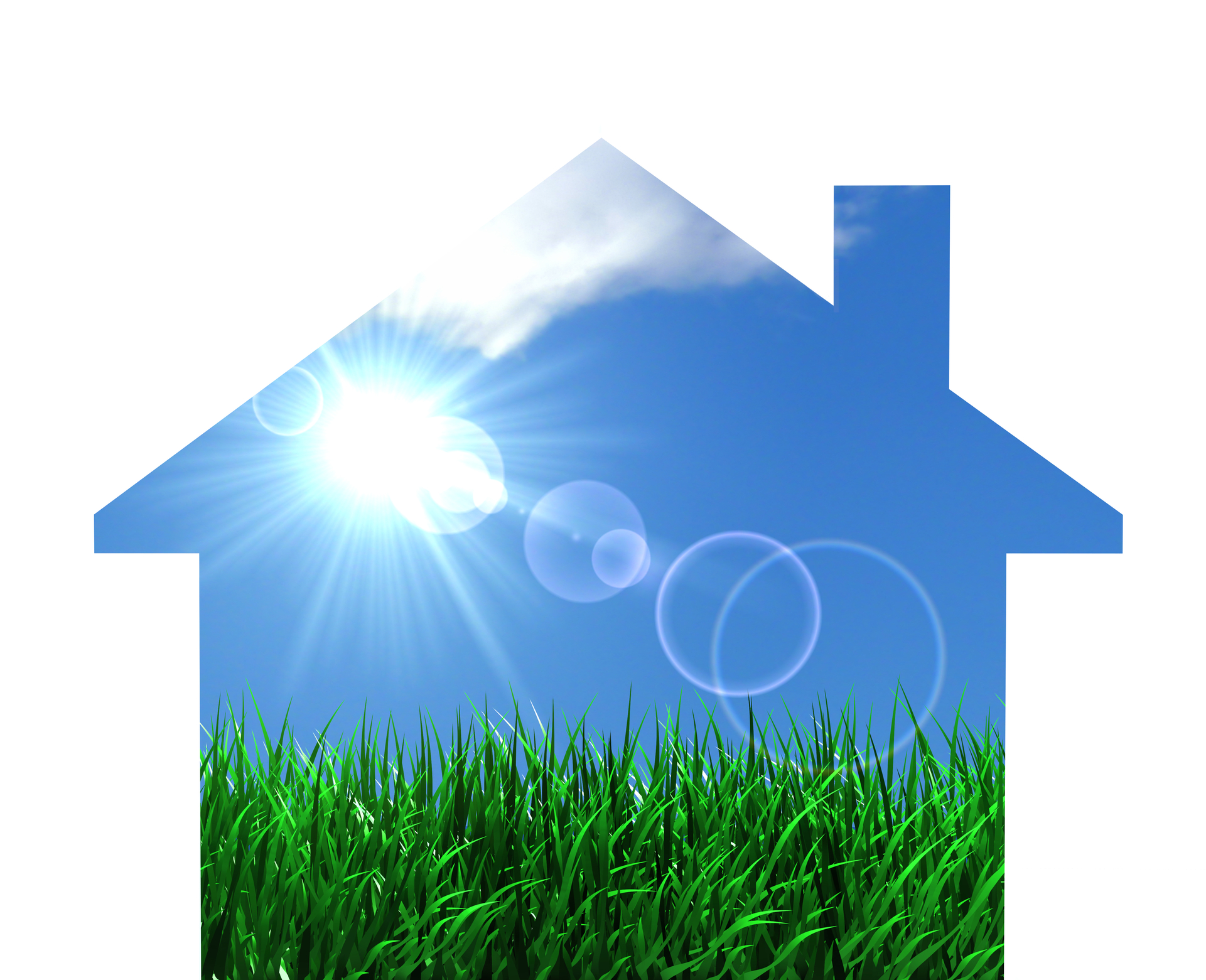Home Safety and Security
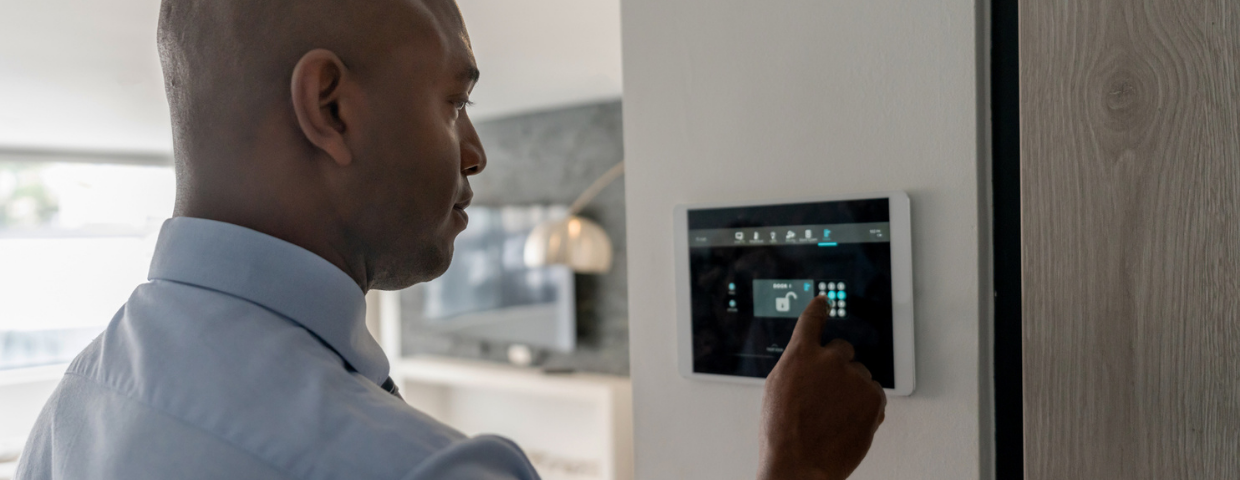
It’s true that your home is an investment and an asset, but most importantly, it’s your livelihood, so taking measures to adequately protect it is well worth your time. An unfortunate reality of being a homeowner is that your home can be a target for mischievous and/or criminal acts.
Fortunately, there are tools and systems you can use to mitigate damage from these kinds of attacks and keep your home safe, in both everyday home life and during the selling process. Sometimes the best part of security systems is the peace of mind that comes with knowing your home is protected. Many of our personal items can be replaced thanks to homeowners insurance, but you cannot put a price on feeling safe at home.
Home Safety and Security
Technology
As time goes on, home technology continues to improve and become more closely integrated with the way we think about a home’s basic functions. There are countless products that can help to automate the systems in your home while better protecting it. When considering these tools, educate yourself about the risks the devices may pose if the proper safeguards aren’t in place. For example, some smart speakers and voice-activated assistants may make everyday home life easier but can leave the door open for potential breaches of personal information if the proper security measures aren’t taken.
Smart Home Devices
The concept of a “smart” home has shifted over the years, but what does this term really mean? And what makes a device “smart”? In essence, a smart device is one that uses technology to make home life easier, more efficient, and more convenient, saving you time in the process. Often using automation and/or remote control, these products allow you to customize the systems in your home to best fit your lifestyle and the needs of your household.
Home Security Apps
Home security apps help to manage your home’s security systems all in one, centralized location. This makes it easy to closely monitor your home even when you’re far away. These apps are typically capable of connecting to door and window sensors, cameras, thermostats, and control lights while allowing you to set alarms and various other home protectants. These apps can offer peace of mind that your home is safe, even when you’re not there.
Alarm Systems
If you are considering an alarm, you have an array of options that vary from self-install motion detection kits to full-service home security systems. If you choose to set up your alarm system yourself, you’ll want to install motion detectors on your doors and windows, especially if they can be easily accessed on the ground floor. These kits will often offer a 24-hour support line whose services may come at an extra fee.
Full-service security systems can include everything from an alarm system and panic buttons to and integration with your smoke detectors and/or fire prevention system. These services can be expensive up front, but usually have a reasonable monthly rate. In some cases, having a home security system installed can reduce your insurance rates.
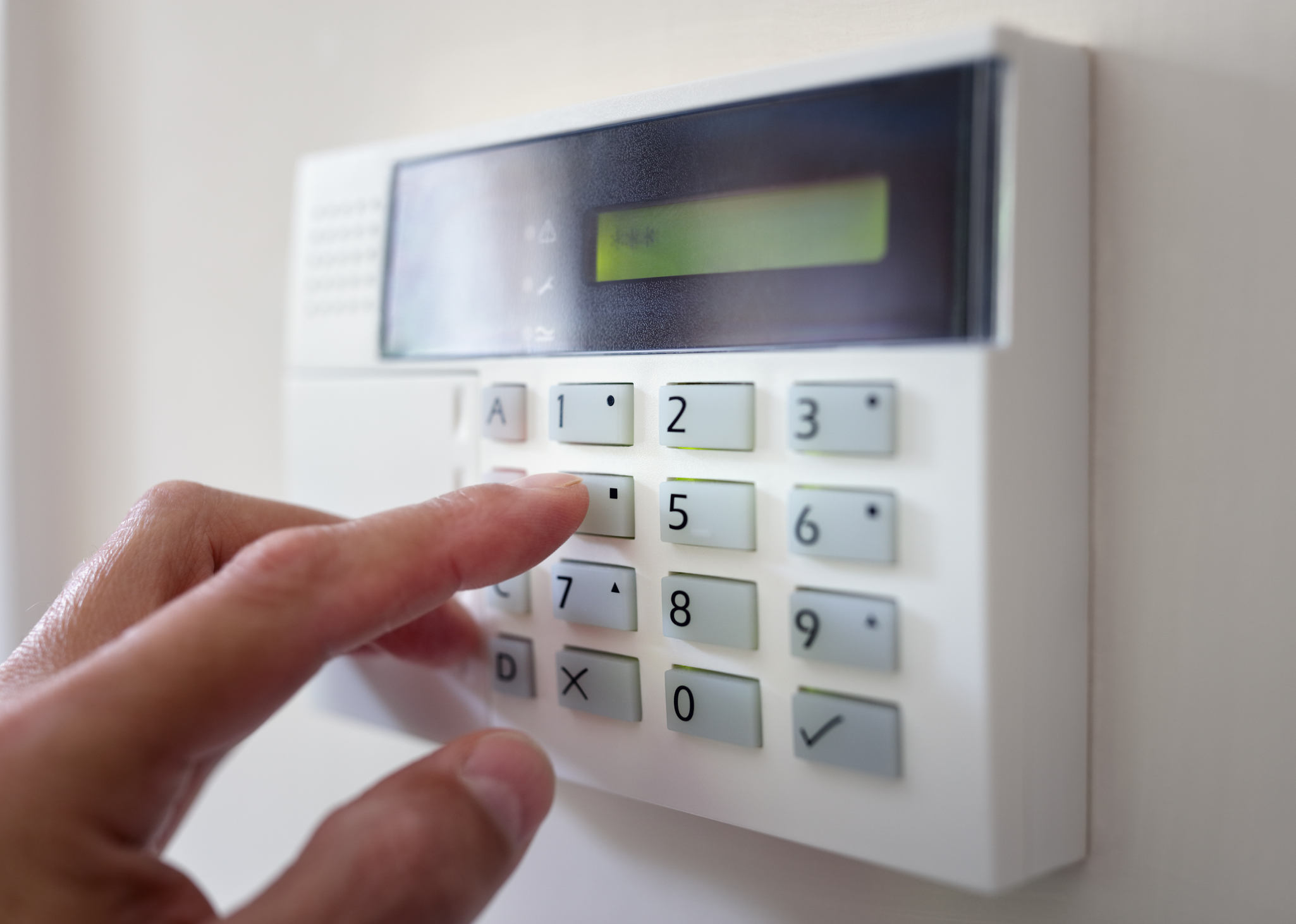
Image Source: Getty Images – Image Credit: BrianAJackson
Upgrade Your Locks
After you’ve moved into your home, it’s a good idea to change the locks. This will give you peace of mind that, once the new locks are installed, no one outside of your household will be able to access your home. Also consider getting a high-quality front-door deadbolt. A poorly installed or weak one can make it easier for an intruder to kick in your door. Front door locks come in many forms, from the traditional models with keys to digital options that require passcodes or fingerprints. It’s also a good idea to check all the locks on your windows. Some older models are easy to jimmy open with a little wiggling. For ground floor windows, you may want to consider double locks.
Security Cameras
Nowadays, security cameras are widely available for home installation. When shopping around, compare different products’ capabilities to find the one that best suits your own security needs. Installing security cameras in high-visibility locations with clear sight lines can help to deter intruders. At the very least, they ensure that you’ll have evidence of an intrusion, should one occur. With so many home security products available, you won’t have trouble finding a system that’s easy to set up. Professional systems, however, generally have more robust monitoring services and require professional expertise to install.
Exterior and Interior Home Lighting
Having exterior lights and/or flood lights on timers or motion sensors is a good way to deter nighttime intruders. Add sensor lights to key entry points on your home, including the front door, back door, and/or basement entries. If you have an unused side yard, consider lighting there too. Keeping your home well-lit makes unwanted visitors weary of being seen.
If you will be gone from your home for an extended period of time, consider using timed lighting options in your home to give the appearance that someone is home. You can select timers for bedrooms or living areas and program a radio or TV to provide some white noise while you’re away.
The Importance of Community for Home Safety
Programs like Neighborhood Watch and NextDoor are very successful in some communities, by creating an environment where everyone is looking out for each other. Building close-knit relationships with your neighbors can go a long way in making you feel safe at home. Whether this is through a formalized program, or a shared agreement with your community, developing relationships with your neighbors is a great way to keep your home safe.
8 Tips for a More Energy Efficient Home
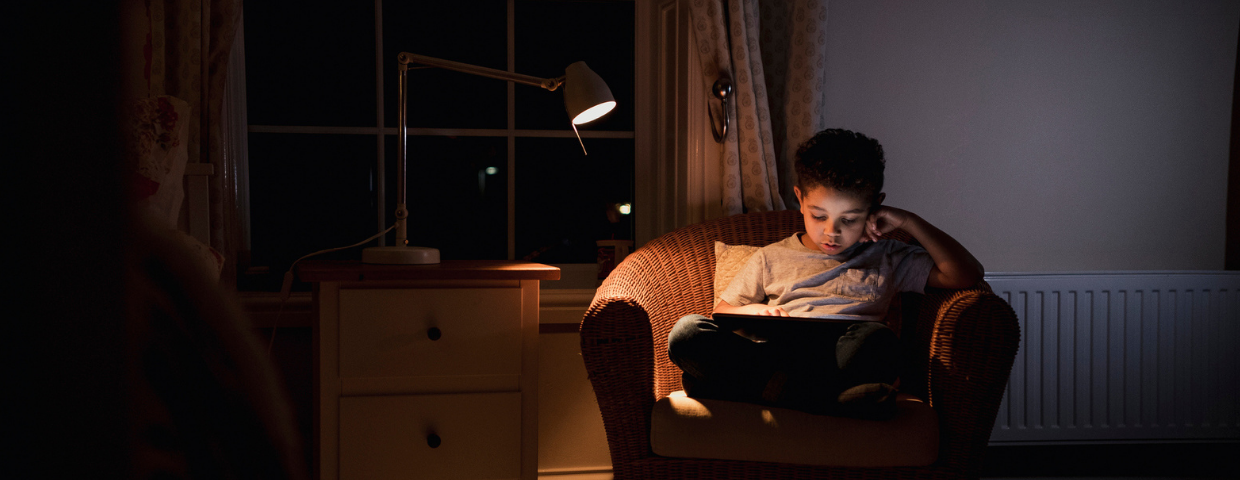
Whether they are motivated by rising energy costs or a desire to cultivate a more sustainable home, homeowners are constantly searching for ways they can go green, reduce their home’s energy waste, and save money in the process. Here are some simple methods for a more energy-efficient home.
8 Tips for a More Energy Efficient Home
1. Determine Your Energy Output
A natural first step in your energy-efficient journey is to get a gauge of how much energy your home is currently using and where it is being used. Analyze your recent bills to get a picture of your home’s energy consumption and the habits that are tied to that level of usage. From there, you can determine what kinds of cutbacks can be made to save energy. You might also consider hiring a professional energy auditor to fully inspect your home’s energy practices and identify where there’s room for improvement.
2. Laundry Room Best Practices
Adjusting your methods in the laundry room is an easy way to make an impact on your home’s energy output. When it’s sunny, air-dry your clothes to save energy. Most of the energy consumption generated by doing laundry comes from the heating of the water, so use cold water when possible. Wait until you have a full load before running the washer to maximize your laundry room’s efficiency.
3. Install Energy-Efficient Lighting
Replacing incandescent lights with newer, more energy-efficient options is a productive step towards reducing your home’s energy waste. A change of lightbulbs is a relatively cheap solution compared to more expensive energy-saving methods like replacing appliances. Because energy-efficient lightbulbs use less energy than standard bulbs, they commonly last much longer as well.
4. Check Your Windows
Excessive air conditioning and heating are often the culprits behind wasteful energy practices. Weatherstripping and caulking your windows help to regulate the flow of air, keeping your home warmer in the colder months and cooler in the hotter months. Old, drafty windows let in air that can increase your home’s energy usage, regardless of the season. The upfront investment in purchasing new windows will pay off in the long run and will help to reduce energy waste.
5. Check Your HVAC Unit
A fine-tuned HVAC system is critical to making your home as energy efficient as it can be. Maintenance of your HVAC unit periodically to make sure it’s running in tip–top shape and to avoid replacements, which can be quite expensive. The cleaner your HVAC filters, the more efficiently they can run. The filters should be swapped out a maximum of every three months, more often if you use it year-round or if you have pets at home.
6. Insulate Your Home
A well-insulated home can deliver significant savings on heating and cooling costs. Walls and windows are common areas where air can escape, but so are pipes and ducts. Wrapping all these areas in insulation will pave the way for saving energy throughout the house.
7. Turn Down Your Thermostat
Turning down your thermostat is an effective method of reducing energy consumption. Even lowering it by one degree will lower your furnace’s energy output and can make a difference in your home’s overall energy efficiency. Remember to clean your furnace filter often. A clean filter will allow your home’s heating system to run more efficiently and cost-effectively.
8. Set Energy Efficiency Goals
Once you’ve begun to implement some of these strategies to make your home more energy-efficient, you’ll discover new ways to reduce your home’s energy waste while saving money. Set goals for your home’s overall energy output in a given month or set a target number you’d like to see on your next energy bill. Track your home’s progress in energy efficiency and the savings you’ve generated over time to see the difference you’ve made.
Technology in Your Home

Every year there are more products that come out to automate your home. There are many reasons to add technology and to automate your home including safety, security, efficiency and convenience. Here are some reasons and products that are must have for your home.
For Safety
There are many products that will help keep your family and home safe and prevent disaster.
- Water sensors – Water damage is a common issue within homes. There are many types of water sensors that will detect water from a burst pipe, a broken supply line or clogged toilet. Water sensors will alert you if your home gets a leak so that you can act quickly to prevent any more damage.
- Indoor room sensor – An indoor room sensor is like a smoke detector with many more functions. Most indoor room sensors can detect indoor air quality, temperature, and humidity to help you monitor your home. You will receive alerts, and many are also voice activated.
For Security
Add these products to keep a close eye on your home and belongings while you’re away, or while you’re home
- Security cameras – Now with home automation you will be able to keep a close eye on the inside and outside of your home. You can get security cameras that include audio recording, motion detection and allow you to view footage remotely using an app.
- Door & window sensors – there are many types of door sensors that will fit your budget. Most are small and sleek so they are undetectable, when their magnetic field is broken by opening a door or window you will receive a notification of the exact window or door that was disturbed.
- Smart lock – These are great not just for security but also for convenience. With smart locks you can lock and unlock your door from anywhere.
For Convenience
Take control of your home with automation and smart tech that is simple and convenient.
- Smart blinds – smart blinds allow you to lower the blinds without ever getting up. There are few different options for smart blinds to control with a remote, your eye phone or connect them to your Alexa to make them voice activated.
- Smart fridge – Smart fridge options can include a lot of different features depending on what you are looking for. Smart fridges can include touchscreen interface that connect to the internet, internal cameras, cooling options and a connection to your phone so that you can control it remotely.
- Smart vacuums – smart vacuums are a great self-cleaning tool that you can activate while you are out of your home. These vacuums will clean your floors without any physical labor and can be controlled remotely.
For Efficiency
Smart technology can help make your home run more efficiently & save you money.
- Smart Home lighting – with smart home lighting you can control lights in your home remotely. Set a schedule or turn off and on and dim to save energy powering your lighting.
- Smart fan – With a smart fan you can control the speed and how long your fan is running. This allows you to turn on the fan at optimal times while also shutting it off when the energy it uses is no longer benefiting you.
- Temperature control – For controlling temperatures within your home look for a smart thermostat. Features for smart thermostats include Wi-Fi capabilities, scheduling when your heating and cooling systems start and stop. Most include energy reports so you can adjust how you use the system.
Beyond Alexa – Other Smart Appliances You Can Use In Your Home
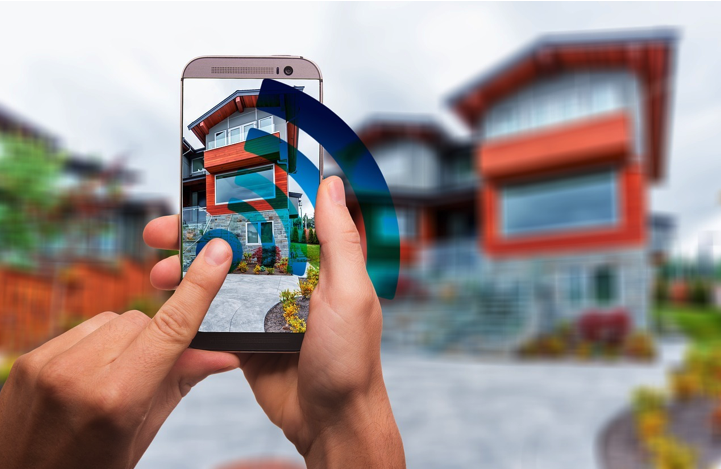
The nation’s largest home-building company, Lennar, now integrates Amazon’s “Alexa” smart speaker system as a function in new homes they construct. In the United States alone there are reportedly at least 39 million privately owned smart speakers, and the growth seems likely to only continue.
4 Ways to Make Smart Tech Upgrades to Your Garage
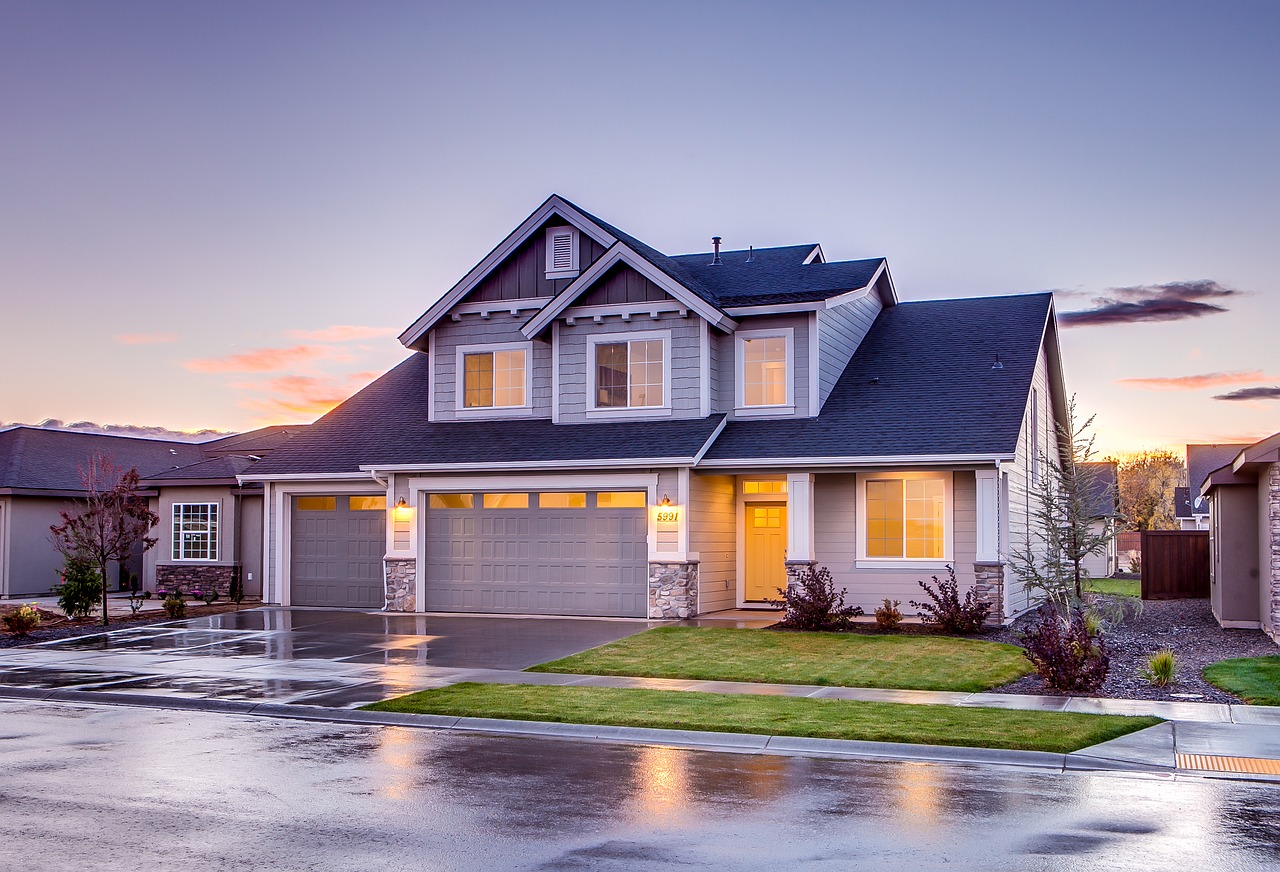
When it comes to upgrading your home with the latest technology, your garage is likely to be the last thing on your radar. But as electric vehicles and even self-driving cars are hitting the road across the country, real estate listings are touting smart garages in high-tech cities like Palo Alto, California and Austin, Texas. Not to mention the simple fact that garage tech can boost…
Work Smarter – Not Harder with Smart Home Technology

While home automation is becoming more prevalent, naturally there are more and more products becoming available as “smart devices”. Here are some of the more diverse home gadgets we have found, beyond thermostats and security cameras:
 Facebook
Facebook
 X
X
 Pinterest
Pinterest
 Copy Link
Copy Link
